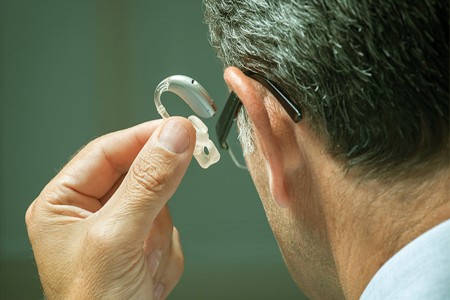
The Science Behind Hearing Aid Devices: How They Work
Hearing aid devices are intricate pieces of technology designed to assist individuals with hearing loss by amplifying sound.
Here's an overview of the science behind how they work:
1. Basic Components
Microphone: Captures sound waves from the environment and converts them into electrical signals.
Amplifier: Boosts the strength of the electrical signals, making the sound louder.
Speaker (Receiver): Converts the amplified electrical signals back into sound waves and delivers them into the ear.
Battery: Powers the device.
Computer Chip: Processes the sound, customizing it based on the user's hearing loss and the surrounding environment.
2. Sound Processing
Analog vs. Digital:
Analog Hearing Aids: These devices amplify all sounds in the same way. They can be adjusted manually but do not differentiate between types of sounds.
Digital Hearing Aids: These are more sophisticated and use digital signal processing (DSP). The sound captured by the microphone is converted into digital data by an analog-to-digital converter. The computer chip then processes this data, allowing the device to differentiate between speech and background noise, adjust volume, and apply other algorithms to enhance sound quality. The processed sound is then converted back into an analog signal by a digital-to-analog converter and delivered to the ear.
3. Feedback Management
Feedback occurs when the sound from the speaker gets picked up by the microphone again, creating a loop that results in a high-pitched squeal. Modern hearing aids employ algorithms to detect and reduce feedback by canceling out the problematic frequencies.
4. Noise Reduction
Noise reduction technology in hearing aids helps to distinguish between speech and background noise. The device reduces the amplification of unwanted noise, making it easier for the user to focus on conversations.
5. Directional Microphones
Directional microphones enhance the ability to focus on sounds coming from specific directions, typically from the front (where conversations usually occur). This technology is particularly useful in noisy environments.
6. Compression
Dynamic range compression is a technique used to manage the wide range of sounds that a person encounters. It amplifies soft sounds more than loud ones, making speech clearer without making loud sounds uncomfortable.
7. Connectivity Features
Bluetooth and Wireless Technology: Modern hearing aids often include wireless connectivity, allowing them to connect to smartphones, televisions, and other devices. This enables users to stream audio directly to their hearing aids, improving the clarity and quality of the sound.
8. Adaptation and Personalization
Automatic Adaptation: Many hearing aids can automatically adjust their settings based on the environment, such as switching from a quiet to a noisy setting.
Personalization: Through apps or professional adjustments, users can fine-tune their hearing aids to match their specific hearing loss profile and preferences.
9. Rechargeable Batteries
Many modern hearing aids now come with rechargeable batteries, making them more convenient and environmentally friendly compared to traditional disposable batteries.
10. Real-Ear Measurement
Real-Ear Measurement (REM): This is a technique used by audiologists to ensure that the hearing aid is providing the correct amplification. A small microphone is placed in the ear canal to measure the sound level, and adjustments are made to the hearing aid to optimize performance.
Hearing aids are powerful devices that combine several advanced technologies to help individuals with hearing loss experience a better quality of life. Through continuous innovation, they are becoming more effective, comfortable, and user-friendly.